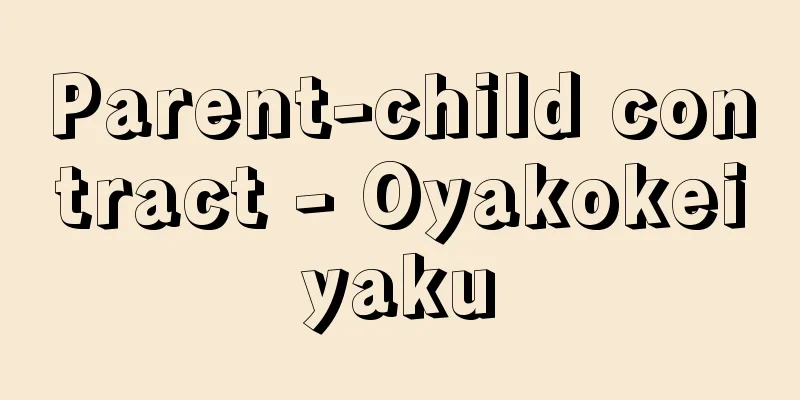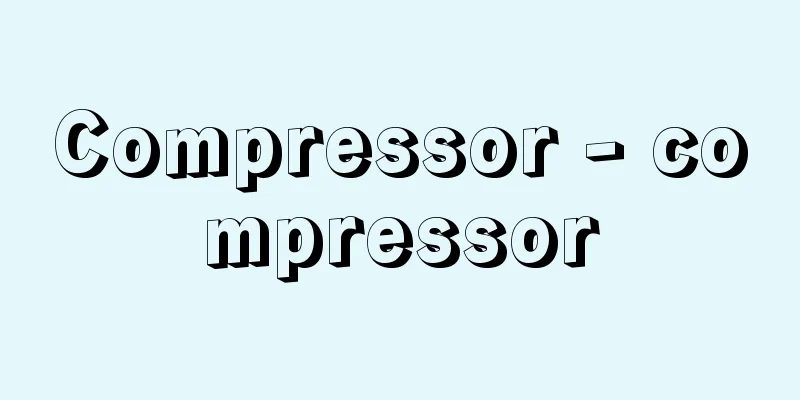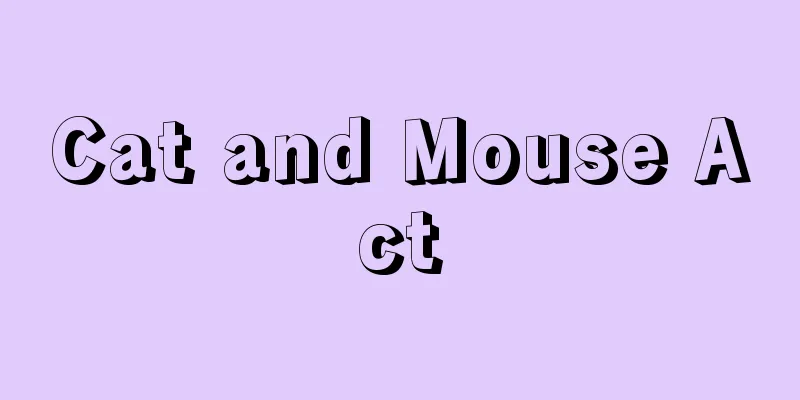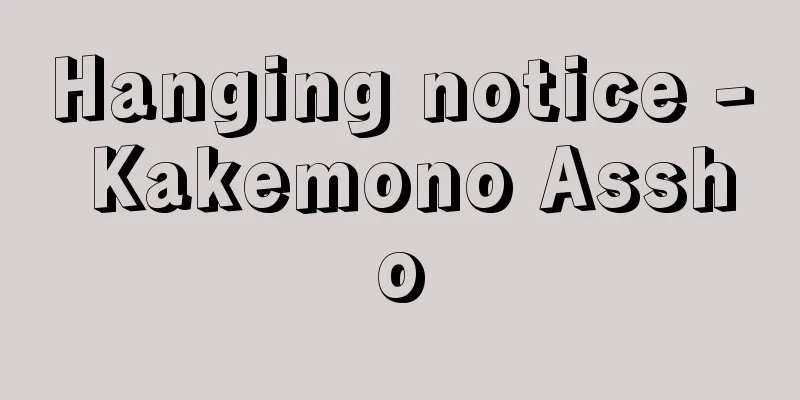Schizophrenia
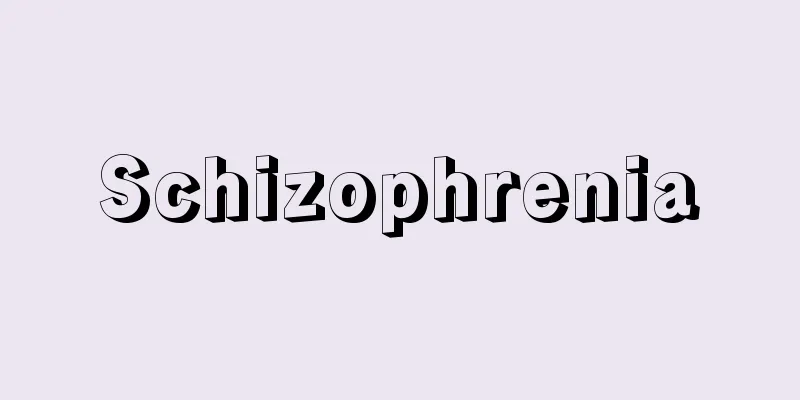
|
A type of mental illness. In 2002, the name was changed to schizophrenia. It mainly begins in adolescence, and progresses while showing characteristic abnormalities in thinking, will, emotions, etc., and in many cases leads to a specific deterioration of personality. E. Kraepelin once called it dementia praecox, but unlike simple dementia, its essence is not a decline in intelligence but a disintegration and separation of mental functions, and Swiss psychiatrist E. Bleuler (1857-1939) later named it schizophrenia. There are various theories about the cause of the disease, such as endocrine abnormalities and abnormalities in the dopaminergic neuron system, but it is not yet confirmed. Mental overwork and shock are likely to be triggers. Subjective symptoms include delusions of persecution and closely related auditory hallucinations and abnormal somatic sensations (abnormal bodily sensations), and patients have factitious experiences such as ``being controlled by others.'' Emotionally, symptoms include a sense of the destruction of the world, ecstasy, and anxiety and restlessness due to delusions and hallucinations. Objective symptoms include loss of interest in reality, withdrawal from social life, and withdrawal. Behavior is also inconsistent and impulsive, with empty laughter, talking to oneself, and strange movements and expressions. In addition, a unique conceptual collapse is a thought disorder that can be seen through linguistic expression, which causes confusion of the entire thought process. The disease is usually classified into defloration type (defloration disease), catatonic type (catatonia), paranoid type, and simple type, but the boundaries are unclear as they transition between each other. Treatment is basically drug therapy with psychotropic drugs such as phenothiazines and butyrophenes, and electric shock therapy and insulin shock therapy are rarely used anymore. In addition, psychotherapy is also important when the disease progresses chronically. → Related topics LSD | selective mutism | borderline personality disorder | rejection disorder | cosmetic therapy | behavioral therapy | confusion | neurosis | mental disorders | psychoanalytic therapy | multiple personality disorder | projection | paranoia | insomnia | schizophrenia | tinnitus | depersonalization | lobotomy Source : Heibonsha Encyclopedia About MyPedia Information |
|
精神病の一つ。2002年,統合失調症と名称が代わる。主として青年期に発病し,思考,意志,感情などの特徴的な異常を示しながら進行性に経過して,多くは特有の人格荒廃に至る。かつてE.クレペリンは早発性痴呆(ちほう)と呼んだが,単なる痴呆(認知症)と異なり,その本質は知能低下ではなく,精神機能の解体・分離であり,後にスイスの精神医学者E.ブロイラー〔1857-1939〕が精神分裂病と命名。病因として内分泌異常やドーパミン作働性ニューロン系の異常など種々の説があるが未確定。精神的過労やショックなどが誘因となりやすい。主観的症状として,被害妄想(もうそう)と,それに緊密に結びついた幻聴や異常体感(身体感覚の異常)などがあり,〈他人にあやつられる〉などの作為体験を有する。感情面では世界破滅感,恍惚(こうこつ)や,妄想・幻覚に基づく不安・焦燥感などを呈する。客観的症状として,現実への興味・関心を失い,社会生活から離れてひきこもる。行動上でも一貫したものがなく衝動的で,空虚な笑い,独言,奇妙な動作や表情を示す。また言語表現を通じて認められる思考障害として,独特の概念崩壊があり,そのため思考全体が混乱する。病型として通常,破瓜(はか)型(破瓜病),緊張型(緊張病),妄想型,単一型に分類されるが,互いに移行し,境界は不明瞭。治療は,フェノチアジン系,ブチロフェン系などの向精神薬による薬物療法が基本で,電気ショック療法やインシュリン・ショック療法などはほとんど用いられなくなっている。また慢性経過をたどる場合は,精神療法も重要である。 →関連項目LSD|緘黙症|境界例|拒絶症|化粧療法|行動療法|錯乱|神経症|精神障害|精神分析療法|多重人格|投射|パラノイア|不眠症|分裂気質|耳鳴り|離人症|ロボトミー 出典 株式会社平凡社百科事典マイペディアについて 情報 |
<<: Mental Health and Welfare Act
>>: Introduction to Psychoanalysis - Introduction to Psychoanalysis
Recommend
Oxya japonica japonica (English spelling) Oxyajaponicajaponica
…[Tokuji Chiba]. … *Some of the terminology that ...
Go Mun (English spelling) GoMun
…However, this cultural name, which encompasses a...
Eliha - Eliha
…Population: about 16,000. Also called Jericho, o...
Engine oil - engine oil
Also called motor oil. A lubricant for automobile ...
Dallisgrass
A perennial grass of the grass family cultivated i...
Rikkyo University
It is a private institution. Its origins date bac...
Soga clan
A medieval samurai family whose main territory was...
Bolbitis heteroclita (English spelling)
…[Masahiro Kato]. . . *Some of the terminology th...
Ferrotype
A photographic term referring to the polishing of ...
Karaki - Touboku
Also called "karaki." It refers to hard ...
Gifford, EW
…Edward Sapir linked the bipartite naming system ...
Poverty Bay
…Poverty Bay is shallow and does not have a large...
Attic
...The rhythm of the epic poem, which has six lin...
Wood, J. the Elder
…[Hoshi Kazuhiko]. … *Some of the terminology tha...
Intelle - Intelle
…In France, feudal law established the system of ...
